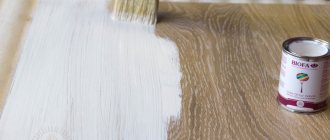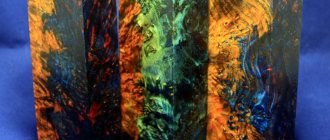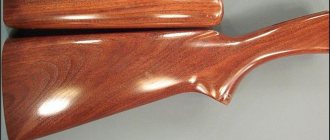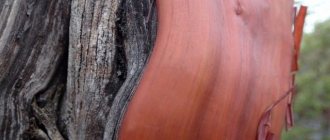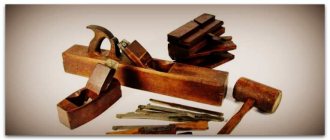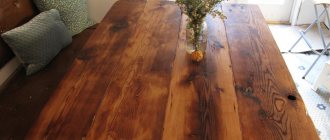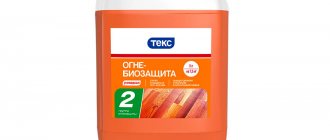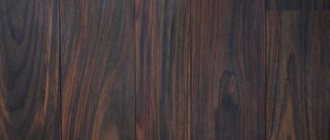Oil is an ideal assistant in the protective and decorative treatment of wood. It is used for finishing floors and terraces, walls and facades, garden and room furniture, saunas and baths. It tints and colors wood, provides protection from ultraviolet radiation and moisture, fungus and mold.
To preserve the natural beauty and warmth of living wood for a long time, you need professional materials. We reviewed 10 manufacturers, among which you will surely find the best wood oil for interior or exterior use specifically for your needs.
The compositions listed in the article effectively care for and protect any untreated wooden surface for a long period of time.
Borma Wachs (Italy)
The Italian company Borma Wachs has been producing professional wood coatings for almost 100 years. The line includes traditional topcoats based on natural oils with a minimal content of volatile organic substances and products completely without them - VOC FREE. The range includes oils for interiors and exteriors, combining aesthetics, resistance and durability with ease of application and maintenance:
- colorless and white parquet oils with resins and hard waxes for finishing;
- universal primer oils for tinting floors and walls, furniture and doors, stairs and ceilings in natural colors;
- finishing materials for countertops and kitchen utensils, children's furniture and toys;
- glazing compounds for facades, gazebos and products for heat-treated wood;
- clear and colored transparent terrace oils and coatings for garden furniture;
- high-hardness oils and waxes for restoration work and processing of antique furniture.
| Product/Features | Purpose | Consumption 1 l/m2 | Drying, 1 sheet/hour | Coating | Smell |
| Grundierol Color Oil | impregnation/priming | 8-12 | 6-8 | colored matte, 18 basic shades | soft |
| Hardwax Parquet Oil | finishing composition for parquet | 10-12 | 8-12 | colorless matte, semi-matte and glossy | soft |
| Holzwachs Lasur | glaze with UV filters and antiseptics for facades | 8-12 | 8 | transparent color, 16 shades | characteristic |
| Terrace Oil | oil with UV filters and antiseptics for terraces | 12-16 | 10-12 | transparent satin, 12 shades | characteristic |
| Sauna Oil | composition for floors and cladding in the sauna and treatment in 1 layer | 8-16 | 24-48 | colorless matte | No |
Advantages and disadvantages of using oils
Without treatment, wood will not last long. Impregnation involves:
- ease of processing;
- environmental cleanliness;
- reasonable price;
- improving the aesthetics of the appearance of structures;
- the appearance of a beautiful shine;
- speed of restoration work;
- disappearance of scratches;
- extending the service life of products;
- versatility (any processing material is assumed);
- the appearance of a protective film;
- UV protection.
Along with a lot of positive qualities, there are certain disadvantages in using oil compositions, which are worth mentioning:
- there is a need for regular care;
- Grease stains may appear and will require re-processing.
Saicos (Germany)
German manufacturer of coatings for wooden surfaces. The range includes oil impregnations and finishing coatings based on natural oils: sow thistle, soybean, tung, sunflower and thistle, waxes and safe dyes. The compositions are suitable for different types of wood, including exotic high-density and heat-treated ones. The best wood oil for interior work among the Saicos range is undoubtedly Premium Hartwachsöl, which has a high-class fire hazard certificate KM1.
The assortment includes colorless, colored transparent and opaque products for processing:
- wooden floors - parquet, solid wood, cork;
- furniture, ceilings and walls, slabs, heavily loaded work surfaces and countertops;
- facades and fences, window frames, terraces and street furniture.
The company's product range also includes a whole series of oil additives: anti-slip, fire-resistant, to speed up drying and against fading, as well as compositions with decorative effects of “metallic” and aged wood.
| Product/Features | Area of use | Consumption 1 l/m2 | Drying, 1 sheet/hour | Coating | Smell |
| Oil-Grundierung | oil primer for application in 1 layer | 60 | 8-10 | colored matte, 15 shades | weak |
| Premium Hartwachsol | floor covering | 13,5 | 2-5 | colored transparent and opaque, matte and glossy, 8 shades | weak |
| Holzlasur | glaze with antiseptics for facades and garden furniture | 13 | 10 | colored silky matte, 16 shades | weak |
| Haus & Garten-Farbe | paint for facades and interior works | 17 | 8 | opaque silky matte, 23 colors | weak |
| Holz-Spezialol | oil with UV-resistant pigments for terraces | 14 | 8 | transparent silky matte, 7 shades | weak |
Improved compositions
Since each of the listed types of oils, along with its advantages, usually also has a number of disadvantages, a wide window of opportunity has opened for manufacturers of construction chemicals in the development of improved oil impregnation compositions.
Modern oil protective compounds are only based on a natural base, and the necessary technical properties are achieved by adding the following types of additives:
- other oils with highly targeted properties;
- substances that accelerate polymerization (driers);
- additives that increase resistance to ultraviolet rays;
- tinting components;
- bactericidal additives;
- natural or artificial wax.
The most famous brands among oil impregnations today are Osmo, Teknos, Gnature, Tikkurila, Aquatex and Biofa. Our company is the official dealer of these products, therefore, when ordering work using the listed types of oils, it is possible to pay their cost at a wholesale price.
Biofa (Germany)
A German company that has been producing products for the protection and decorative treatment of wooden surfaces for almost 40 years. The composition includes linseed, wood and castor oils, soft and hard beeswax and carnauba wax, paraffin and rosin. This allows the materials to penetrate deeply into the wood structure, increasing the gloss, hardness and elasticity of the coating.
In assortment:
- solid oils for floors and furniture, work surfaces;
- universal solid oils for ceilings and walls, floor coverings, stairs and doors;
- oils for terraces and vertical outdoor structures - pergolas, gazebos, fences, facades.
The range for the interior is much wider than for the street. This way, when choosing the best wood oil for interior work, you can compare more options to find the best solution for all your requirements.
The range includes products for light wood, water-based compounds, as well as colored liquid or solid wax for rubbing sauna surfaces. Colorless compositions are tinted in different shades.
| Product/Features | Application | Consumption 1 l/m2 | Drying, 1 sheet/hour | Coating | Smell |
| 2044 | universal composition for priming and finishing | 10 | 16-24 | colorless, silky matte | soft |
| 9062 | for flooring and stairs | 15 | 16-24 | colorless matte | soft |
| 2043M | protective oil with antiseptics for facades | 15 | 16-24 | colorless matte | soft |
| 3753 | composition with antiseptics for terraces | 15 | 6-8 | transparent semi-gloss | weak |
Impregnation technology
Almost all types of oil impregnations are applied according to the same algorithm, so to illustrate the general principle of work, let’s consider the sequence of treating a log house with pure linseed oil with the addition of wax (as the cheapest option for external protection).
To purchase working components, we recommend using the following proportions:
- oil consumption - 100 grams per 1m2 of treated area;
- wax consumption - 400 grams of wax per 10 liters of oil.
In this case, mixing the ingredients is done immediately before applying the composition, by heating the oil and wax in a steam bath.
Further actions are performed in the following sequence.
Grinding
The initial treatment of logs with oil impregnations should always be preceded by sanding the log frame and then cleaning it from dust.
Please note that this stage is required for all types of impregnations.
Treatment with primer and antiseptic
Except for those cases where the documentation for the oil directly states that it does not require preliminary priming, before coating with oil the surface of the log house must be treated with a primer and an antiseptic.
Considering that almost all modern antiseptics have priming properties, these two operations can be combined. Therefore, the next step after sanding and cleaning is to saturate the frame with an antiseptic.
Preparations based on sodium fluoride or bromide compounds have good reviews. Drying time is indicated in the description. For antiseptics and primers, it is usually 24 hours.
Oil application
Airless spraying installation
It is recommended to start coating with impregnation by plugging the ends of the logs. For this task, you can use both the main working mixture and special mastics available on the market.
Wall covering can be done with a brush, roller or using special sprayers.
The optimal solution would be a device for airless spraying of liquids with a long “rod”.
Application is carried out in two layers. Intermediate drying time is 12 hours. It may take a week for a pure oil coating to completely polymerize, but if you use brand-name formulations, complete drying will occur within 24 hours.
Deep cracks in logs should be treated immediately with a brush or a denser spray pattern.
Below are photos of two states of one log house:
- before impregnation;
Facade before linen-wax treatment
- and after.
Facade after linen-wax treatment
If during the work it was not possible to maintain the optimal ratio of oil and wax, turpentine can be used to equalize its concentration.
Rustins (UK)
The British brand has been producing materials for the protection and decorative processing of wood for about 90 years. It was he who brought Danish oil to the market - a mixture of natural ingredients for coating indoor and outdoor surfaces. The company's products are aimed at connoisseurs of environmental friendliness. The line contains completely herbal formulations without chemical additives.
The main products are acrylic, polyurethane varnishes and stains for tinting before treatment with oils. The brand’s selection of oils themselves is as follows:
- teak and Danish - mixtures based on linseed and tung oils for furniture, countertops, toys and outdoor work;
- pure tung and linseed oils without solvents;
- coverings for floors and work surfaces;
- composition for facades, terraces and decking near outdoor swimming pools.
The manufacturer does not add wax to the materials. For best coating results, it is recommended to apply three layers.
| Product/Features | Purpose | Consumption 1 l/m2 | Drying | Coating | Smell |
| 1 word/hour | |||||
| Danish Oil | the best wood oil from the brand's products for interiors and outdoor surfaces, except floors and terraces | 12-14 | 4-6 | colorless, semi-matte | soft, oily |
| Floor Oil | for floors | 12-14 | 6-8 | colorless, glossy | weak, white spirit |
| Decking Oil (plain and anti-slip) | oils with biocides and UV filters for decking | 12 | 6-8 | colorless and colored transparent, semi-matte | weak, white spirit |
| Worktop Oil (water based) | for kitchen worktops | 12-14 | 24 | colorless, semi-glossy | soft, oily |
| Exterior Wood Oil | for outdoor use | 13 | 2-3 | colorless, semi-matte | weak, white spirit |
How to choose the right one
Experts advise adhering to the following rules:
- Low-density species (linden and alder) prefer to deal with thick, saturated oils. Liquids can penetrate inside and not freeze there.
- For coniferous species, special impregnations are not needed. They have so much resin inside that they do not need additional protection. If absolutely necessary, you can use thick consistencies and use the waxing method.
- A distinctive feature of birch and beech is their high density. The first treatment should be with liquid products. Thick substances are suitable for repeated manipulations.
Before starting work, it is advisable to experiment on a small board.
To improve the functionality of a product, certain components can be added to it. To improve the absorbency of tung impregnation, it is enough to dilute it with white spirit in a ratio of 60% to 40%. To make linseed oil dry faster, add 30% turpentine to it and heat it a little. Sometimes wax is added to the substance. This increases the antistatic characteristics of the product and speeds up the drying process.
The choice of products is so large that you can get lost in its diversity. Improved new products are released annually. Where to buy the product? There are several options. The most acceptable way is to visit a specialized retail outlet, take a closer look at the assortment on display, and understand what it costs. If in doubt, you can consult the seller. He will not only help you choose, but will also calculate the required volume of the purchased product. You can use the services of an online store. The main thing is not to fall for the tricks of unscrupulous suppliers and not to purchase low-quality goods at a high price.
Rubio Monocoat (Belgium)
Belgian manufacturer offering 100% natural wood coatings. Their key advantages are composition and economical consumption. Products are applied in one layer, which is sufficient for long-lasting protection. A liter of composition is enough to treat 50 m2. The materials are based on natural and modified linseed oil and beeswax. There are no organic volatiles.
There are three products on the Russian market for interiors and surfaces used outdoors. They are suitable for all types of wood and structures. The palette includes over 40 shades for interior coatings and 28 colors for exterior use.
In addition, the company's assortment includes products for wooden siding and terraces. It involves processing in two steps - first, a colored primer with UV protection is applied, then a layer of oil.
| Product/Features | Purpose | Consumption 1 l/m2 | Drying, 1 sheet/hour | Coating | Smell |
| Oil Plus | indoor use | up to 50 | up to 21 days to gain strength | colored transparent and opaque, matte | No |
| Oil Plus 2C (two-component with drying accelerator) | indoor use, tropical wood | up to 50 | up to 7 days to gain strength | colored opaque and transparent, matte | No |
| Hybrid Wood Protector | outdoor use | up to 30 | 24-36 | colorless and colored, matte | No |
Scope of use
The variety of products is impressive. Which product is best to buy depends on many factors. Products are produced with varying degrees of gloss, and therefore they are divided into the following categories:
- semi-matte;
- matte;
- glossy;
- semi-gloss.
Based on the number of components, wood oils are:
- single-component;
- two-component.
Each composition is designed to perform specific tasks. The product can be used:
- For interior work. It is intended to impregnate tools, decorative elements, children's toys, doorways, balconies, tools, and furniture. Apply to a previously cleaned base. They can be transparent and colored. A roller or sponge is required for application.
- For outdoor work. The list of objects for impregnation is as follows: boats, decking, gazebos, outdoor furniture, garages, building facades, landscape design structures.
Tikkurila (Finland)
A Finnish company that entered the market more than 150 years ago with the production of linseed oil for technical purposes. This is the first company to introduce a point-of-sale tinting system that allows you to get the color you want right in the store. The brand focuses on paints and varnishes. There is less choice of oils. The compositions are based on linseed and tall oils, waxes and additives that protect surfaces from fungus and mold, ultraviolet radiation, and algae formation.
In the company's line-up:
- antiseptic glazes for facades, open terraces, windows and doors, street furniture;
- products for surfaces in baths and saunas.
The company does not have oil-based coatings for interior work in residential premises.
The choice of oil coatings for outdoor use is wider, so when choosing the best wood oil for outdoor use, pay attention to the company’s product range. Valtti products are tinted in 40 shades, Supi in 36 glaze colors.
| Product/Features | Purpose | Consumption 1 l/m2 | Drying, 1 sheet/hour | Coating | Smell |
| Valtti Pro | heavy-duty glaze with UV filters for facades | 5-14 | 12 | glossy | characteristic, white spirit |
| Valtti Expert Akva | water glaze for exterior use | 5-10 | 2 | matte | weak |
| Terrace Oil | for terraces and outdoor furniture | 5-7 | 12 | matte | characteristic, white spirit |
| Valtti Puuöljy Akva | water-borne oil for garden furniture, docks, terraces | 5-15 | 4 | matte | weak |
| Supi Lattiaöljy | water-based oil for saunas and baths | 8-15 | 48 | transparent, matte | weak |
Characteristics of wood oil
This processing material was created to protect structures made of wood from external and internal harmful influences. That is, for protection. Moreover, it can be used as an aesthetic decoration.
In addition, the oil is used to prevent wood surfaces from corrosion.
Gnature (Germany)
Another German company specializing in natural materials for the protective treatment of wood surfaces. The products contain natural ingredients: linseed, castor, safflower and wood oils, rosin, hard and soft waxes, kaolin, thermally treated resins.
The assortment includes protective primer oils, glazing and covering materials for:
- wooden floors, parquet, cork and stairs;
- countertops and furniture (with a high wax content);
- walls and ceilings;
- terraces and decking;
- facades, fences, doors and windows.
The coatings are colorless, tinted according to the catalogue. The line contains organic and completely natural products with zero VOC content. Thanks to a specially selected composition, facade paints are resistant to fading: the company guarantees color retention after Fassadenöl treatment for 10 years.
| Product/Features | Usage | Consumption 1 l/m2 | Drying, 1 sheet/hour | Coating | Smell |
| Hartwachsol | wear-resistant floor oil | 16-20 | 12-16 | matte | light oily |
| Bienenwachslasur | water glaze for walls in rooms | 13-17 | 12-16 | matte shine | No |
| Mobelöl | for furniture and application in 1 layer | 40-50 | 16-24 | silky matte or silky | practically absent |
| Terrassenol | with UV filters for decking boards | 16-20 | 16-24 | matte shine | easy |
| Fassadenol | with UV and bioprotection for facades | 18-Oct | 16-24 | matte | easy |
Product quality assessment
What should you pay attention to in order to avoid mistakes when choosing a product? There are certain product indicators that need to be taken seriously. Here is a list of the main characteristics:
- Security level. Preference should be given to products that do not contain toxic ingredients. This is especially true for products that will be used indoors and where significant temperature changes are possible.
- Depth of penetration into the structure of the timber. The deeper the impregnation, the better the protective properties.
- Waterproof features. This functionality is given special attention if the facades of buildings or rooms with high humidity levels (baths, saunas, kitchens, bathrooms) are to be impregnated.
- Vapor permeable capabilities. At the end of the drying process, a film should not form on the surface. Otherwise, objects will stop “breathing.”
- Composition components. In the manufacture of the product, both natural and mineral components can be used. Their percentage ratio is very important. The more naturalness, the better the quality of the product.
- No smell. The first sign of the absence or minimal content of hazardous chemical components.
- Transparency. A quality product will not change the structure and appearance of wooden products. This is especially true for valuable breeds. If the composition contains a coloring pigment and the cost of such a product is budget, most likely it is colored azure and not oil.
Pinotex (Netherlands)
A trademark of the Akzo Nobel concern, which produces wood-protective products and focuses on materials that prevent damage by fungus and algae, blue stains and mold, destruction from ultraviolet radiation and moisture. The company's line includes 16 products. The main place is occupied by hybrid-based glazes, solvent-soluble and water-based impregnations, interior water-based, heat-resistant and weather-resistant, yacht varnish.
Oil with a wax additive for treating wooden surfaces is represented by one product. It is intended for outdoor use, protects wood for up to 2 years, is available in a ready-made teak color and can be tinted in 50 colors according to the company’s fan pattern. It is recommended to apply in three layers.
| Product/Features | Application area | Consumption 1 l/m2 | Drying, 1 sheet/hour | Coating | Smell |
| Wood&Terrace Oil | for terraces, garden furniture, windows and doors, gazebos and stairs | up to 20 | 12 | matte | characteristic, white spirit |
Review of manufacturers
The construction market offers a wide range of oils suitable for processing materials. For home processing, we can highlight: Borma Wachs, OSMO, Adler, American Wood Oil, Varathane, Tikkurila. For external ones, the following brands can be noted: Belinka, Tikkurila, Borma Wachs, OSMO.
The construction market offers a wide range of oils suitable for processing materials.
Remmers (Germany)
A German brand with a large product portfolio, which includes compositions for the protection, finishing and restoration of wood. These are impregnations and primers, stains, varnishes and paints, glazes and oils, care products for treated surfaces. The company offers materials for all types of wood and bamboo, professional premium products that can be used as a primer, intermediate and finishing coat.
Products include coatings for:
- facades, garden furniture and terraces;
- parquet and stairs;
- windows and doors;
- furniture and children's toys;
- baths and saunas;
- furniture, floors, stairs.
The line also includes universal azure oils from the ECO series. They can be used in both interior and facade work.
| Product/Features | Usage | Consumption 1 l/m2 | Drying, 1 sheet/hour | Coating | Smell |
| Ol-Dauerschutz-Lasur (eso) | interiors and wood outdoors | about 16 | 8 | matte | weak |
| Hartwachs-Ol (eso) | wooden floors, cork and stairs | 20-25 | 12-16 | matte | weak |
| Wohnraum-Lasur | furniture, walls and ceilings, toys | 10 | 2-5 | silky matte | easy |
| Pflege-Ol | decks, decking and garden furniture, including tropical hardwoods | 14-16 | 12 | glaze matte | characteristic |
Understanding the terms
Tinting wood varnish (as well as stain, impregnation and other means) means gradually adding dye until it acquires the desired shade. That is, color is a dye that is gradually added to the solution.
As for which color to choose, it is recommended to adhere to the color chart when purchasing it. It is also useful to know that colors that use organic pigments are not particularly resistant to light. Therefore, for outdoor work it is better to use a color scheme that uses inorganic pigments.
There can be several hundred shades of color; the common types of tinting wooden stairs alone include about 50-100 shades. But if suddenly the color palette is not enough, then you can always mix 2 different colors and get your own shade.
In this case, it is recommended to first experiment with a small amount of color and test the resulting tinted varnish or stain on an unnecessary piece of wood. A sign that everything went well can be considered a smooth surface after drying, the absence of drips and uniform coloring.
Osmo (Germany)
German brand with 140 years of history. The company produces professional coatings and the wood itself, so it knows exactly what treatment and protection should be in different climatic conditions. The products contain a combination of natural sunflower, soybean and thistle oils, hard carnauba and candelilla wax, and paraffin.
The line includes water-based and solvent-soluble materials. However, the latter use a dearomatized solvent, so upon application there is only a slight smell of vegetable oil. All products are economical. A liter is enough to treat 24 m2 in one layer. A closed jar can be stored for 5 years and, if necessary, the coating can be renewed without prior sanding.
The assortment includes colorless, glazing and covering compositions for:
- wooden floors, including in wet rooms;
- furniture, countertops, toys, walls and ceilings, doors and windows;
- facades, wooden street structures;
- open terraces, stairs and pool sides.
The company offers a wide range of products designed specifically for highly targeted, specific tasks. This allows you to find the best oil for light and dark wood, tropical high-density wood, as well as coatings with silver and gold effects, accelerated drying and anti-slip additives.
| Product/Features | Usage | Consumption 1 l/m2 | Drying, 1 sheet/hour | Coating | Smell |
| Hartwachs-Öl Original | branded floor oil | 24 | 12 | colorless matte, semi-matte, glossy, silky matte | weak, oily |
| Dekorwachs (transparent and intense color) | interior from floor tinting to toys | 24 | 12 | silky matte and silky glossy, 24 colors | light, oily |
| Holzschutz Öl-Lasur | 2-in-1 azure primer, any outdoor surfaces | 26 | 4-6 | matte | weak, oily |
| Terrassen-Öle | for decking boards | 24 | 12 | silky matte | light, oily |
| UV-Schutz-Öl Farbig | with UV protection for facades | 18 | 10-12 | transparent, with natural shades | weak, oily |
Common mistakes in using Varathane formulations and their consequences
Despite all the advantages listed above, oils and color tinting compositions of the Varathane series have specific features that must be taken into account when preparing work on the creation of protective coatings.
Ignorance of these features leads to errors, the consequences of which often have to be corrected by our specialists.
Rough grinding
When processing large surfaces, many inexperienced performers are tempted to skimp on finishing sanding.
Firstly, this requires additional financial and time costs, and secondly, wood logs, beams or boards freshly sanded with coarse sandpaper visually look quite “finished”. This is quite natural, since when using classic versions of impregnating oils (teak, exterior, etc.), fine grinding is desirable, but not required.
However, when working with oil-stain, the situation is completely different. If you cover an excessively rough surface with such a composition, you will get a too contrasting pattern, which is not always compatible with the overall aesthetic concept of the house.
Tip: before applying Varatan tinting oils, be sure to finish sand the surface using sandpaper No. 180 or No. 220.
Violation of application technology
One of the features of Varathan oil tinting compositions is their low dry residue. This is necessary to increase penetrating ability, but at the same time it can lead to disruption of the uniformity of color shade if the processing technology is not followed.
The essence of this mistake is painting with excessive application of impregnation to the surface being treated. Note that this approach is common and even recommended when working with traditional types of oils.
This problem is most relevant for Wood Stain and Fast Dry oils. When working with gels, the penetration rate of impregnation is much lower, so the formation of uneven stains is less likely.
Tip: for any method of painting with oils from this series, use a rag and remove unabsorbed oil residues 5-10 minutes after application.
Excess layers
Difference between one and two layers
In practice, both of the above errors lead to the same result - the desire to immediately apply a second layer of impregnation.
We categorically do not recommend doing this, since Varathan tinting oils have another specific feature - a strong difference between the appearance of the first and second layers.
Moreover, there is a clear difference in results when using a different application method (for example, between a rag coating and a roller applied one).
The difference between a rag and a roller
Therefore, if a mistake was made, then before applying the second layer, test how the second layer will look somewhere in an inconspicuous area, and only after that proceed to adjusting the main surface.
Insufficient drying time between coats
Advertising catalogs for products from the Varatan series indicate that if the wood is soaked in tinting oil, further processing can begin within an hour (sanding, varnishing, etc.).
We recommend treating this statement as a marketing ploy, since there are many situations when much longer periods are required to completely dry the first layer. In particular, when treating floors in houses made of timber and logs, after creating the first layer, it is recommended to pause for at least 8 hours.
To confirm this recommendation, we cite the fact that the instructions for Varathan Fast Dry oil (that is, the fastest drying of the series) say that before applying the next layer, it is necessary to test the drying result, and if the test turns out to be negative, increase the drying time.
conclusions
In the products of each manufacturer you can find compositions that will protect, decorate or renew surfaces in the home and outdoors. We present the final table of manufacturers, where you will find information on the average consumption of products, price, coating characteristics and the presence of wax in the composition.
| Brand/Features | Ruler | Average consumption, m2 | Price per liter, rub. | Coating | Wax included |
| Borma Wachs | wide | 8-16 | ≈ 2000 | colored and colorless, up to 18 colors | There is |
| Saicos | wide | 15 | from 700 to 3000 | colorless and colored, up to 23 colors | There is |
| Biofa | wide for interior | 10-15 | from 2000 to 3500 | colorless base, tinted | There is |
| Rustins | narrow | 12-14, application in 3 layers | from 2500 | colorless and three natural shades | No |
| Rubio Monocoat | three products | 30-50, treatment in 1 layer | from 8000 | colorless and colored, from 40 colors | There is |
| Tikkurila | wide for outdoor use | 7-10 | up to 1300 | colorless base, up to 40 shades | No |
| Gnature | wide | 15-20 | ≈ 2000 for 0.75 l | colorless, tinted | There is |
| Pinotex | one product | 20, processing in 3 layers | ≈ 2300 | teak, tinted in 50 shades | wax additive |
| Remmers | wide | 15 | from 1500 to 3000 | colorless and colored in natural shades | There is |
| Osmo | wide | 24 | from 3700 | clear and colored, 24 ready-made colors and tinting in 2000 shades | There is |
Please note that there are products that can be used for different purposes - for tinting, priming and finishing. This allows you to save on surface preparation and reduce processing time.
Some companies pay more attention to protection, others to the decorative effect, and still others try to satisfy all needs with one product. When choosing the best oil for wood, you need to take into account the composition, decorative capabilities, consumption, price and, of course, the tasks facing you.
Rules for processing products
Experts recommend taking the impregnation process seriously. It is not enough to buy quality products. To achieve a positive result, it must be applied correctly. There are several ways to oil surfaces. Some resort to rubbing, while others prefer soaking. The second option is acceptable for small structures (dishes, toys, figurines). To get the perfect result and admire it, you need to take the following steps. Let's look at each stage in more detail.
Preliminary stage
At this stage, the surface is prepared for oiling. According to buyers, much attention is paid to leveling the base. Items are sanded well. If there are old layers of varnish or paint, they must be removed. If you have to work with floors, ceilings, walls, you will have to perform the following tasks:
- Removing the surface from the old coating. A spatula or wire brush is suitable for these purposes. If the paint turns out to be of high quality and does not want to peel off, you can resort to using a hair dryer. As soon as bubbles appear, you can pry it off with a spatula and remove it.
- Sanding the base. It is worth using coarse and fine sandpaper. The surface must be brought to a smooth state. There shouldn't be any roughness.
- Removing dust. A soft broom or a regular rag is suitable for manipulation. No contaminants should remain on the surface.
Coating
Actions are carried out using a soft cloth flap (for large areas) or a brush with natural bristles (if the volume is small). The process looks like this:
- The product is thoroughly mixed.
- Pour into a clean container.
- The matter is wetted.
- Application occurs along the fibers.
- The substance is left for 15 – 20 minutes.
- Excess is removed with a rag.
- Wait some time for complete drying.
- Repeat processing.
Soaking
The method is suitable for small items. The substance is poured into a deep container. A wooden product is placed inside the container. The time the structure stays there is not limited. It is advisable to wait until air bubbles begin to emerge from the wooden products.
Afterwards, the item is taken out and placed on a table covered with clean paper sheets. Excess impregnation should drain off. Then take a piece of soft cloth and rub it until it shines. Flaxseed oil in its pure form will dry for up to three weeks. But the depth of impregnation is impressive. Wooden objects receive ideal protection from mold, moisture, rot, and insects. To speed up the drying process, you can add beeswax to the substance.

